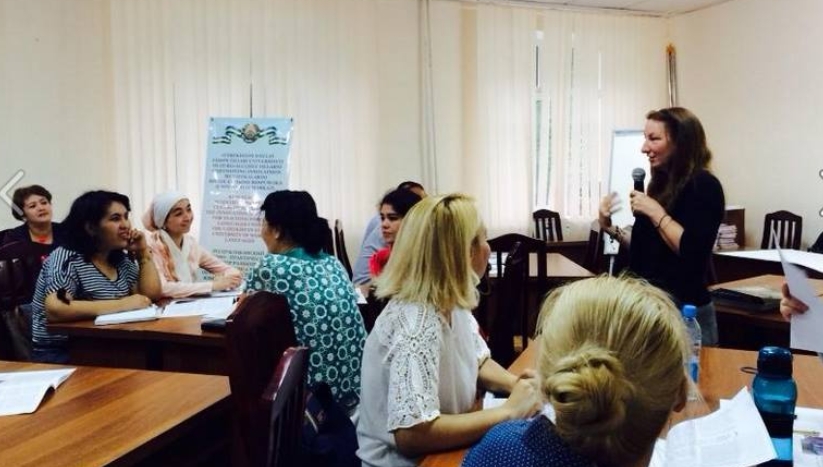The ESP Materials Design Partnership Project Summit held on May 16 in Tashkent attracted 42 participants from across the country and several guests from Uzbek and American education programs.
Participants came ready to engage in high-level discussion of issues that will affect the upcoming project. The project touches on issues that are highly debated in the field of ELT, and this summit gave educators a chance to offer input and to come to a general consensus on these issues for the purposes of the project.
Twice during the day, participants got time to show their own experience and talent as designers by designing tasks for learners, both individually and in groups. These first experiences set the tone of the project asone of creativity and practical application. They also will provide a benchmark for participants. As they go into training, these first exercises will mark their starting point so that they can better judge their own progress.
The first discussion hinged on the nature and definition of ESP. After lively debate, participants arrived at a consensus to agree on a definition of ESP for the project that meets the projects main goal to train materials designers to produce textbooks that effectively raise the English language proficiency of entering university students to levels that allow them to access materials and lessons already published in English in their chosen fields of study.
 The second discussion raised questions of teacher beliefs about learning, learners, and language. It is the position of the project that all teachers form theories of pedagogy. Materials designers must be aware of their own theories and beliefs so that they can purposely implement them in their designs. One key belief expressed by participants that will affect materials design is that the materials carry culture.
The second discussion raised questions of teacher beliefs about learning, learners, and language. It is the position of the project that all teachers form theories of pedagogy. Materials designers must be aware of their own theories and beliefs so that they can purposely implement them in their designs. One key belief expressed by participants that will affect materials design is that the materials carry culture.
Participants expressed concern that their materials carry content appropriate to Uzbek culture. Participants also expressed the strong belief that language teaching must focus on communication rather than rote drill or grammar exercises.
Participants also offered input on the constraints and conditions facing teachers and students that must be taken into account by the project and by working designers.
Participants expressed concern that the system is in transition as reforms are made and that not all teachers are prepared. Materials will be designed to support teachers during the transition. Participants also expressed a strong awareness of regulatory guidelines and needs.
Lastly, participants were asked to look over the list of planned topics for training and add to the list their own training needs.
Participants showed strong interest in such issues as how to choose content and images and how to use them without violating copyright or plagiarizing, how to incorporate critical thinking activities, how to write clear instructions for teachers and students, and how to design appropriate assessment items.
All in all, the Summit was a great success. The first training phase starts Friday, May 22. It will be richer and more effective for the input received during this Summit.
